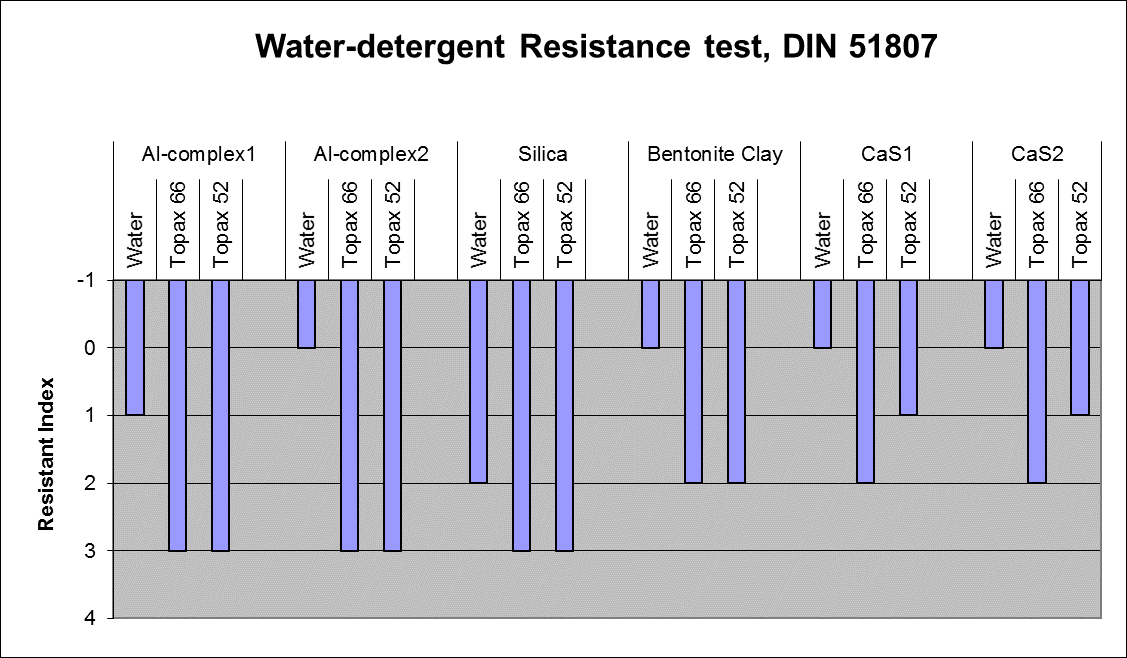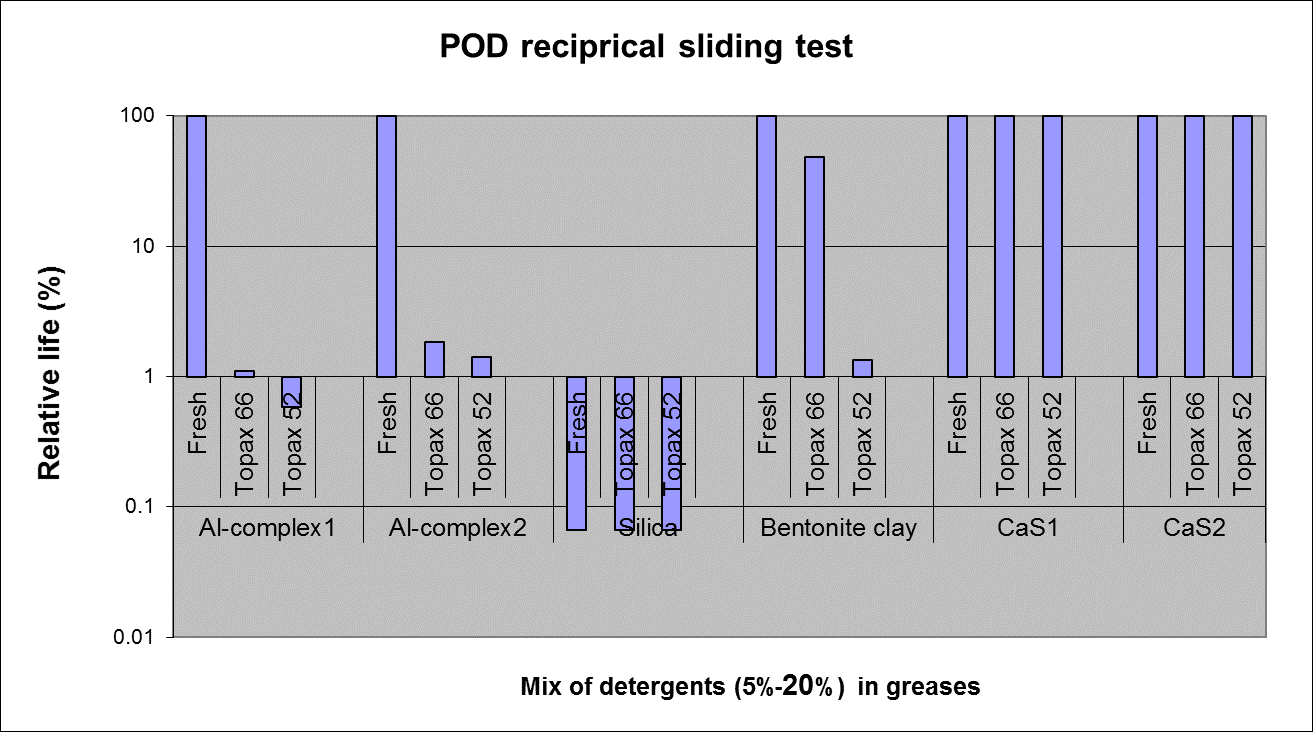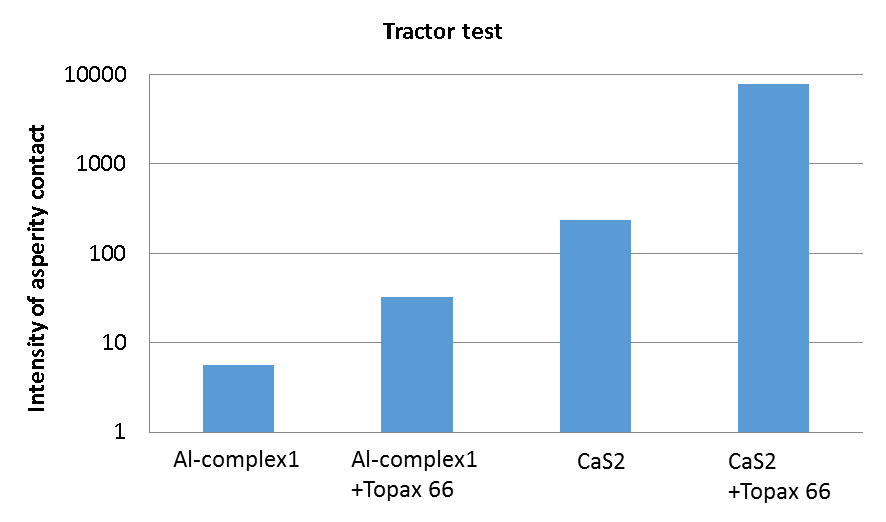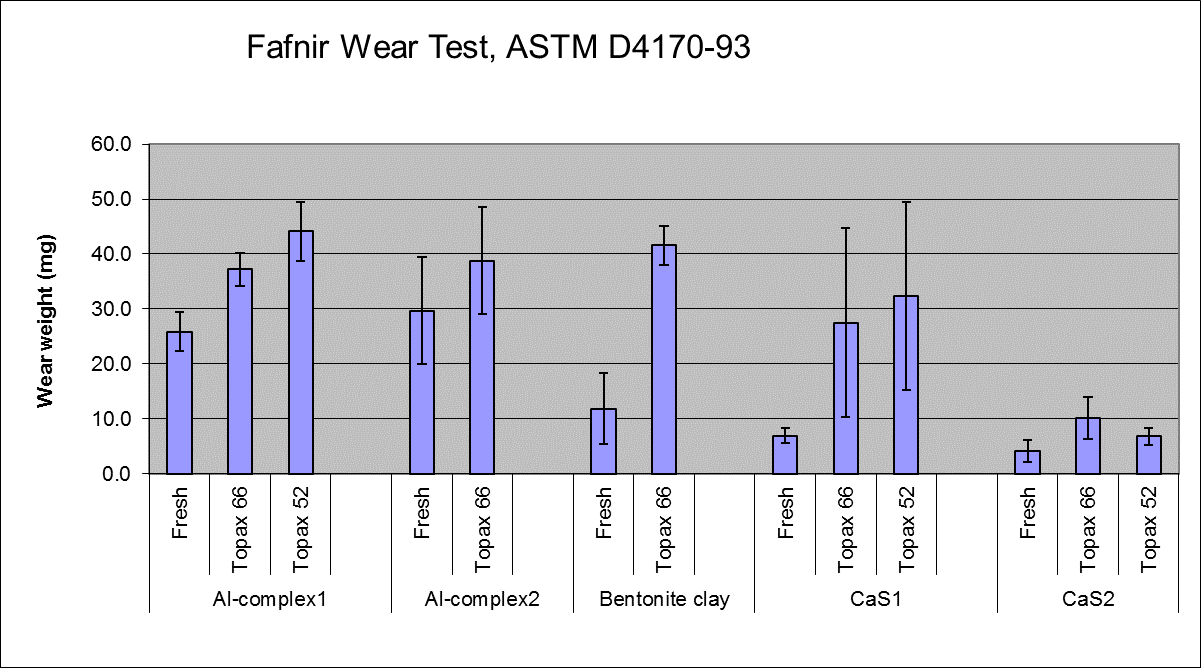Effects of detergent (water) contamination on grease performance
Xiaobo Zhou
SKF Research and Technology Development, Nieuwegein, The Netherlands
INTRODUCTION: Water contamination is among the top causes for the failure of rolling element bearings in many applications1. Tests with pure water contamination however did not always show negative effects on the bearing performance2. In bearing applications, pure water contamination does not often occur. Water mixtures with chemicals such as detergents or surfactants have been used for the applications such as cleaning agents in food and beverage processing3, vehicles and machinery, coolants in steel rolling mills4, etc. Negative impacts on bearing life have been reported in these applications. The effects of detergent contamination on lubrication performance have however not been investigated in details and there were limited research and publication on the topic.
METHODS: Two types of detergents were selected: an alkaline detergent Topax 66 (with 2.5 wt% NaOH) and an acidic detergent Topax 52 (35 wt% phosphate acid). Both detergents consist of 1 wt% surfactant (Alayl Dimmethyl Amine Dioxide). The detergents are diluted in de-mineralized water at 5 wt% concentration. Four types of greases were used for testing: 1) two greases with aluminium complex thickener (Al-complex 1 and Al-complex2 greases), 2) one grease with silica thickener (Silica grease), 3) one grease with bentonite clay thickener (bentonite clay grease) and 4) two greases with calcium sulphonate thickener (CaS1 and CAS2 greases). The diluted detergents are mixed with the greases at concentration of 20 wt%.
Several tests were conducted: Water (detergent) resistant tests, pin-on-disc (POD) reciprocal sliding tests, Fafnir wear tests and bearing tests in a home-made Tractor rig. The water (detergent) resistant is a standard test method (DIN 51807-1-90) in which a grease layer is coated on a glass strip which is submerged in the distilled water or in the diluted detergents at 90 oC for 3 hours. A visual inspection is conducted to evaluate the changes of the grease samples which will provide a ranking from 0 (no changes) to 3 (significant change). The POD reciprocal sliding test is a ball on flat test at amplitude of 0.1 mm, frequency of 20 Hz and contact stress of 1000 MPa. This test can quick evaluate the effects of detergents on the grease life to lubrication starvation (sharp increase of friction). Fafnir wear test is a standard test method (ASTM D4170-93), in which a 5/8 inch thrust ball bearing was used. The bearing was loaded at 2450 N under oscillation rolling contact with amplitude +/- 6o and frequency of 25 Hz. The weight loss of the bearing is the measure of the Fafnir wear. In the Tractor rig, DGBB 6306-ETN/C3 is tested under load of 6000 N and speed of 850 rpm. A Lubcheck device is installed to measure the capacitance between rolling contact surfaces which was used to evaluate the intensity of metal-to-metal contacts.
RESULTS: Figure 1 shows the water-detergent resistant test results, in which water has little attack to the greases. Detergents have less attack to the bentonite clay and calcium sulphonate greases but attacked severely the aluminum complex and silica. Figure 2 presents the test results of POD reciprocal sliding test. Clearly, detergents reduced the grease life for all the greases except the two calcium sulphonate greases and again water has little effect. Figure 3 shows the Tractor test results in which the intensity (numbers) of the asperity or metal-to-metal contacts was increased by ~10 times due to the presence of Topax 66 for both Al-complex1 and CaS2 greases and the intensity was higher for the CaS2 grease. Figure 4 shows the Fafnir wear test results. Clearly, the bearing wear was increased significantly due to the presence of detergents for all the greases but the wear for the CaS2 grease remains at very low level.


Figure 1. The detergent (water) resistant tests

Figure 2. The POD reciprocal sliding tests

Figure 3. The Tractor tests

Figure 4. The Fafnir wear tests
DISCUSSION: The test results clearly indicates that both alkaline and acidic detergents attack severely the grease structure, reduce grease life, increases wear and the risk of metal-to-metal contacts. Since surfactant in detergents reduces the surface tension of the water, water emulsion (fine water droplets) in the base oils in greases will be formed 5 (also observed by this study), which will induce local metal-to-metal contacts if the water droplets are trapped in the contacts. Alkaline detergent can react chemically with base oils and form soap causing addition attack to greases. The higher resistance to detergent’s attack provided by the calcium sulfonate greases may be mainly due to the formation of the calcite solid lubricant6 on the contact and the presence of the strong thickener structure, although there are more asperity contact in the greases.
REFERENCES: 1. Jim Fitch, www.machinerylubrication.com/ Read/1367/water-bearing-failure, 2. P. Parsaeian, Wear (2016), 358, 3. K. Hastings, www.kernitelubrication.com, 4. L. Edwards, Lubrication management and Technology, www.LMTinfo.com, 5. Pierre-Gilles de Gennes, etal, Capillarity and Wetting Phenomena, Springer (2004), 16